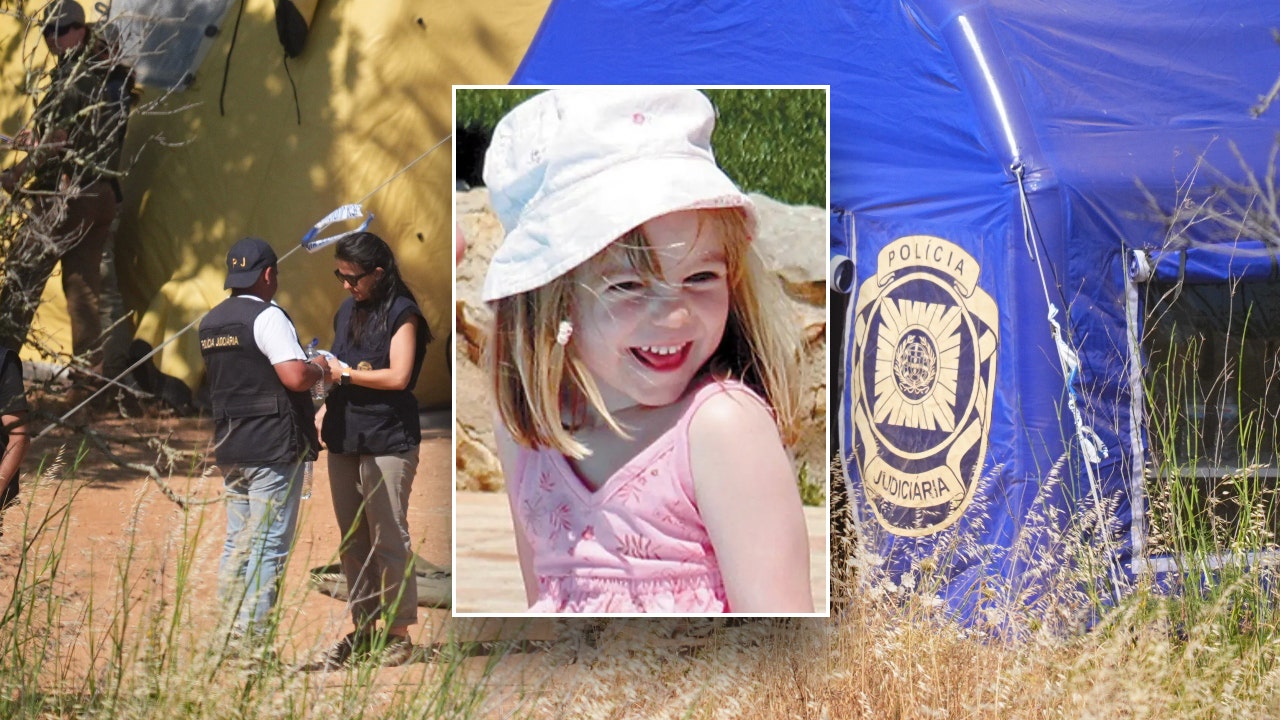Alaska
Permafrost expert and military pilot among 4 killed in a helicopter crash on Alaska’s North Slope

ANCHORAGE, Alaska (AP) — A helicopter crash in Alaska took the lives of a permafrost expert from the Netherlands, a pilot who recently transitioned from the military to fly charter helicopters and two other scientists conducting field work in the North Slope, one of the remotest regions in the U.S.
Ronald Daanen, 51, and Justin Germann, 27, both from Fairbanks; Tori Moore, 26, of South Bend, Indiana; and pilot Bernard “Tony” Higdon, 48, of North Pole, Alaska, all perished last week when the 1996 Bell 206 helicopter they were in crashed into a lake while they were on a scientific mission.
The three passengers were employees of Alaska’s Department of Natural Resources, working in the Division of Geological & Geophysical Surveys.
Authorities in Alaska say search and rescue divers have recovered the bodies of a helicopter pilot and three state scientists whose aircraft went down in a shallow lake last week.
A rescue and recovery dive team was deployed Saturday after a helicopter with a pilot and three state workers crashed in a large lake on Alaska’s North Slope,.
Officials say no survivors have been found after a helicopter carrying a pilot and three state workers crashed in a shallow lake in Alaska’s North Slope region.
An Alaska man on a paddleboard escaped a close encounter with a humpback whale that surfaced right in front of him.
Alaska search and rescue divers recovered the bodies of a helicopter pilot and three scientists on Sunday from the sunken wreckage of the aircraft, which went down in a shallow lake about 50 miles (80 kilometers) south of Utqiagvik — the northernmost city in the U.S., formerly known as Barrow. The National Transportation Safety Board is investigating the accident.
Daanen, a native of the Netherlands, had an ever-present smile and was also known as MacGyver because he could instantly fix anything that went wrong, whether it was repairing a generator or fixing a broken tent pole, colleagues said.
“He’s such a good-natured guy, he’s kind, he’s caring, he’s good humored,” said Howie Epstein, a professor in environmental sciences at the University of Virginia. During summer field work, they studied permafrost and changes in Arctic tundra in Canada, Alaska and Siberia.
When working on the North Slope, Daanen brought his homemade gin flavored with spruce tips, which Epstein said was “delicious.” On a tiny island in Siberia, Daanen walked in with a chunk of gouda cheese the size of a curling stone, which they ate from at every meal for a week.
Daanen and his wife, Ina Timling, also competed in the World Ice Art Championships in Fairbanks. They created elaborate ice sculptures that usually had a science theme, using it as an educational opportunity to teach people about permafrost and Arctic landscapes, said Anna Liljedahl, an associate scientist with the Woodwell Climate Research Center and an affiliate professor at University of Alaska Fairbanks.
“We’ve lost an amazing friend and colleague,” she said of Daanen, who was a geologist for the state.
Permafrost, frozen ground and water were key components of his work, but she said he was a brilliant scientist who had wide and varied interests.
Germann was a state hydrologist with degrees from the University of North Dakota. He paid his way through college by joining the North Dakota National Guard and had to have his parents sign off because he was just a few months shy of his 18th birthday when he joined.
“He’s determined, a young man who chased his dream and accomplished a lot in his life,” his mother Karla said.
He completed an internship in Alaska and immediately made plans to return.
“I don’t think he was ever coming back to southwest North Dakota. That was his dream to be there and kayak and just hike and ride a bike in the snow, which is beyond crazy to me,” she said with a chuckle.
The family had planned to visit Germann in Alaska in September but instead will travel this week to Fairbanks, where they are planning an informal memorial. His mother has been comforted by her son’s Alaska friends, who reached out to his family after his death.
“He had a lot of amazing friends up there, and we can’t wait to meet them,” she said.
Moore was a 2019 graduate from Indiana with a degree in geological and earth sciences. She wrote on her LinkedIn page that she was “interested in biogeochemistry, planetary science, environmental science.”
Her family declined to comment on her death.
Higdon became a full-time pilot in November, going to work for Maritime Helicopters. He had over 2,000 hours combined while flying Bell 206, Bell 407 and Eurocopter EC145 helicopters.
In a statement, the company praised Higdon: “We all knew Tony as the consummate professional and a skilled pilot. He will be greatly missed.”
He previously worked in different capacities at Fort Wainwright in Fairbanks after serving more than 13 years as a military police officer with the U.S. Marine Corps.
Attempts by The Associated Press to reach Higdon’s family were unsuccessful.
___
AP researchers Jennifer Farrar and Rhonda Shafner in New York contributed to this report.

Alaska
Opinion: A plea to Alaska’s congressional delegation for responsible economic policy

The Trump Administration’s unilateral imposition of tariffs, tax cuts for the rich and elimination of cabinet departments and federal employees invite U.S. economic calamity.
The trade war tariffs will neither reduce U.S. trade deficits nor bring about a renaissance in American manufacturing. Federal government revenue generated by these tariffs will cover only a fraction of the revenue lost to tax cuts proposed in the federal budget bill. The oppressive, indiscriminate federal workforce reductions brought about by the Department of Government Efficiency raise deep concerns about the delivery of immediate critical health, safety and welfare services and longer-term agency function. One would be hard pressed to craft a more irresponsible economic policy. It punishes the poor today and future generations of Americans.
The Trump fiscal plan is corrosive for the U.S. as a whole and disastrous for Alaska in particular. Consider each of these fiscal plan elements in turn:
Trade war
The Trump administration’s heavy-handed tariffs on steel, aluminum, automobiles and other raw materials and finished goods are illegal and will raise the costs of imported cars, equipment, machinery and supplies to American manufacturing firms and ultimately result in higher costs passed through to intermediate goods and end-product consumers. In general, a tariff on imported goods and services amounts to a sales tax levied on domestic, U.S. businesses and consumers. It’s a highly regressive form of taxation, hitting low- and middle-income households the hardest. Right now, the blended ‘sales tax’ rate on all imported goods stands at 17.8 percent, up 15 points from its pre-2025 levels. Since imports are more than 11 percent of GDP, it’s a huge pending inflation uptick to consumer prices, which can already be seen in the recent, steep decline in consumer sentiment. Beyond this, the chaotic, haphazard implementation of tariff policy is acutely counterproductive to business investment because trade policy predictability is the cornerstone of well-managed fiscal policy. This is why federal law does not authorize the president to impose tariffs without congressional approval.
For Alaska commerce, which lies at the very edge of the global logistics, the impact from this hurtful cost structure and supply chain disruption has already fueled business network chaos and American brand destruction. Other damages include 1) weakened crude oil price impacts on state royalty and tax revenue, on Permanent Fund earnings, and on oil company capital project optics; 2) time-critical Alaska seafood market disruption from China and other Asia-Pacific counter-tariff policies; 3) falling tourism bookings and 4) disastrous cost increases on the already budget-stressed Alaska LNG energy lifeline. The ultimate outcome of this trade war for Alaska and American business is higher structural inflation, investment contraction, business slowdown, rising unemployment, climbing interest rates, and widening housing and stock market implosion – all tipping the U.S. and especially Alaska toward a recessionary downward spiral. And all entirely unwarranted and unnecessary.
Federal budget and tax cuts. The proposed “big beautiful” budget bill passed on May 22 by the House of Representatives will deepen federal debt to $40 trillion or to 125 percent of GDP by 2035. In response to this nightmare scenario, Moody’s rating agency lowered the U.S. government’s credit score. The U.S. bond market reacted; yields on medium- and long-term US Treasury bonds spiked yet again. According to CBO estimates, the proposed tax cuts will lower after-tax income to the bottom 40% and raise after tax-income to the richest 10%. In addition to tariff shocks, Alaska household disposable income and business earnings will be impaired by the combined impacts of regressive income taxation and higher interest costs.
Beyond these disturbing policy and market dislocations, the proposed budget bill imposes unconscionable safety net impairment to America’s most vulnerable population, including added work requirements and cuts to healthcare spending ($715 billion), SNAP/food stamps ($300 billion), and Medicare ($500 billion). Alaska’s 279,000 Medicaid recipients (including 109,000 children) would face about $3 billion in uncovered healthcare costs for which no safety net alternative exists.
Department of Government Efficiency actions. Over the past 90 days, DOGE has carried out indiscriminate layoffs of about 280,000 federal employees and contractors without consideration for organizational structure and job function; all in the quest to save money by eliminating waste. The layoffs have extended beyond federal agencies, affecting contractors and nonprofit organizations that rely on federal funding. The ripple effect has led to additional job losses, with over 4,400 positions eliminated in related sectors.
Alaska’s 15,000 federal employees, including about 8,000 military, play a disproportionate role in our economy, both in public service delivery and in disposable income. Alaska’s federal workforce serve in mostly year-round jobs, are among the state’s highest paid workers and, critically, they spend locally. Setting aside diminished quality-of-life, public safety and security, a 15% reduction in Alaska’s federal workforce — well below DOGE 20-30% federal reduction target — would result in direct, devastating $250 million in lost wages to local business spending, based on $1.6 billion in reported Alaska federal workforce earnings in 2024 from Alaska Department of Labor and Workforce Development. Add to this further indirect, additional multiplier losses that would follow in step.
Taken together, the Trump Administration’s tariffs and tax cuts will cause economic chaos and destruction. So far, global tariffs — even those recently scaled back — have resulted in trillions of dollars in U.S. capital market destruction, enormous financial market instability, and the promise of rising inflation with slowing economic growth. President Trump’s faulty perception of tariff ‘medicine’ to fix bilateral trade deficits and to generate new federal revenue is analogous to a physician prescribing heavy chemo doses to a perfectly healthy patient. Furthermore, giving gigantic tax cuts to the wealthiest households is like to prescribing steroids to the now-ailing patient — due entirely to unnecessary and irresponsible tariff poisoning! And DOGE’s reckless efforts have brought disruption and dysfunction to all levels of the federal government’s responsibility for: protecting individual rights, overseeing infrastructure and commerce, and providing a safety net lifeline.
Bottom Line: The Alaska congressional delegation must continue to build the congressional coalitions to accomplish three critical things:
• Assert congressional tariff-making authority and oversight to reign in the president,
• Restore congressional authority for federal program formation and spending, and
• Craft a budget that protects the safety net and keeps guard rails on federal deficit expansion.
Will Nebesky is an economist and pilot who lives in Anchorage.
• • •
The views expressed here are the writer’s and are not necessarily endorsed by the Anchorage Daily News, which welcomes a broad range of viewpoints. To submit a piece for consideration, email commentary(at)adn.com. Send submissions shorter than 200 words to letters@adn.com or click here to submit via any web browser. Read our full guidelines for letters and commentaries here.
Alaska
Scientist at Plymouth conservation nonprofit dies in remote Alaska crash – The Boston Globe

Schulte had traveled to Alaska to conduct conservation work, the statement said. He and the helicopter pilot were flying west from Prudhoe Bay to an area where he planned to outfit shorebirds with recording devices when the helicopter crashed on Wednesday, according to a spokesperson for Manomet Conservation Sciences.
The region Schulte was visiting has become a flashpoint in the debate over balancing the nation’s energy needs and confronting climate change. The oil company ConocoPhillips wants to establish an oil drilling venture there known as the Willow Project.
Schulte had also planned to visit the Arctic National Wildlife Refuge, where he was to lead a crew tracking the migratory routes of whimbrels, another shorebird, with satellite transmitters, Manomet Conservation Sciences said.
The National Transportation Safety Board said the crash of the Robinson R66 helicopter killed the pilot and passenger, the only two people aboard. Authorities have not announced what caused the crash and are investigating.
Alaska Public Media identified the pilot as Jonathan Guibas, 54, who worked for Pollux Aviation in Wasilla. Guibas’s mother told the news organization that Guibas had joined the company about a month ago, and had previously lived in California, Guam, and Virginia.
The crash occurred on the first day of the bird study, about 20 miles west of Deadhorse in North Slope, the northernmost section of the state, Clint Johnson, chief of the safety board’s regional office in Alaska, said Friday.
“It’s in a very remote part of Alaska,” Johnson said. “There’s nothing there. It’s treeless, barren, in the middle of no place.”
Earlier last week, the region had been visited by high-ranking members of the Trump administration.
Energy Secretary Chris Wright, Interior Secretary Doug Burgum, and Environmental Protection Agency Administrator Lee Zeldin toured parts of the North Slope to advocate for President Trump’s desire to open parts of the Alaskan wilderness to drilling and mining.
The helicopter had taken off at about 10:40 a.m. The pilot had received special weather clearance, known as VFR, or visual flight rules clearance, Johnson said.
North Slope Borough Search and Rescue traveled to the crash site on Wednesday and retrieved the victims’ bodies; on Friday afternoon, NTSB investigators visited the scene, which is only accessible by helicopter, he said.
An NTSB meteorologist and air traffic controller are working with investigators, who plan to transport the helicopter wreckage to Deadhorse to continue their work, according to Johnson. Officials plan to place the wreckage in a sling tethered to a helicopter for the journey back to Deadhorse, which has an airport, he said.
Last Saturday, Schulte shared photographs of violet-green and tree swallows he had spotted at Creamer’s Field, a wildlife refuge in Fairbanks, Alaska, according to his Instagram page.
Schulte coordinated an American oystercatcher recovery program that was launched in 2009 at Manomet Conservation Sciences. Conservation work by the program and its partners along the East Coast helped to rebuild the American oystercatcher population by 45 percent, the organization said.
“Shiloh gave his life in the service of something greater than himself, dedicating himself to preserving the natural world for future generations,” the group’s statement said.
In March, Schulte discussed progress in regrowing the population of the American oystercatcher, a striking shorebird with long, orange-red bills and black-and-white plumage that lives along the Atlantic and Gulf coasts, according to a news release from Manomet Conservation Sciences.
In 2008, he said the population had dropped to fewer than 10,000 birds across the Americas, a 10 percent decline. Conservation efforts reversed that slide and there are now more than 14,000 birds.
“This success proves that when we commit to conservation, we can restore declining species,” he said in a statement on March 13.
Following the devastating BP oil spill that released millions of barrels of oil into the Gulf of Mexico in 2010, Schulte led a crew of researchers enlisted by the government to document the environmental impact on wildlife.
Schulte’s team was hired by the US Fish and Wildlife Service to locate resident oystercatchers in coastal Louisiana and outfit the oiled ones with radio transmitters to track their health, he told the Globe in 2010.
He earned a doctorate at North Carolina State University, where he studied American oystercatchers on the Outer Banks and helped to band and track the birds, according to his biography on the website for Manomet Conservation Sciences. As an undergraduate student, Schulte studied wildlife biology at the University of Vermont.
He was a competitive distance runner and earned a second-degree black belt in tae kwon do, the biography said.
In April, he ran the Boston Marathon, finishing the race with a time of 2 hours, 52 minutes, and 50 seconds. The time placed him 137th among 2,386 men between ages 45 and 49 who competed, according to results from the Boston Athletic Association.
Laura Crimaldi can be reached at laura.crimaldi@globe.com. Follow her @lauracrimaldi. Tonya Alanez can be reached at tonya.alanez@globe.com. Follow her @talanez.
Alaska
Alaska Railroad work train derails north of Talkeetna with no injuries

An Alaska Railroad train derailed north of Talkeetna early Friday morning with no injuries reported.
Three crew members were aboard the work train at the time of the incident, according to a spokesperson for the railroad. The cause of the derailment was not immediately clear, they said.
Catherine Clarke, an Alaska Railroad spokesperson, said the derailment led to a puncture on the derailed locomotive’s 2600-gallon diesel fuel tank. The Alaska Department of Environmental Conservation is responding to the incident.
“The damaged fuel tank has been secured and initial containment strategies put in place, as efforts continue to remediate the impacted site,” Clarke said by email on Friday afternoon.
Department of Environmental Conservation staff are coordinating with the railroad and other agencies on cleanup, officials said. In a situation report, DEC said Friday afternoon that the amount of fuel spilled “is unknown at this time.”
The derailment took place just after 3 a.m., approximately 22 miles north of Talkeetna on the Curry loop track — a section of the railroad that provides access to a quarry and is not accessible by road, Clarke said.
The derailment occurred around 400 feet from the Susitna River. There are barriers between the fuel spill and river, DEC said.
“The nearest culvert leading toward the river has been secured and blocked as a precautionary measure. No reports of impacts to surface water have been reported. No wildlife impacts have been observed,” the agency said in its situation report.
The Alaska Railroad typically transports around half a million passengers per year. The derailment was not expected to impact the railroad’s main line, which operates trains between Fairbanks and Seward, Clarke said.
-

 News1 week ago
News1 week agoVideo: Faizan Zaki Wins Spelling Bee
-

 Politics1 week ago
Politics1 week agoMichelle Obama facing backlash over claim about women's reproductive health
-

 Technology1 week ago
Technology1 week agoOpenAI wants ChatGPT to be a ‘super assistant’ for every part of your life
-

 Technology1 week ago
Technology1 week agoSEC drops Binance lawsuit in yet another gift to crypto
-

 Movie Reviews1 week ago
Movie Reviews1 week agoThe Verdict Movie Review: When manipulation meets its match
-

 Technology1 week ago
Technology1 week agoWhy do SpaceX rockets keep exploding?
-

 World1 week ago
World1 week agoTwo killed in Russian attacks on Ukraine before possible talks in Turkiye
-

 News1 week ago
News1 week agoOil companies face a wrongful death suit tied to climate change

















